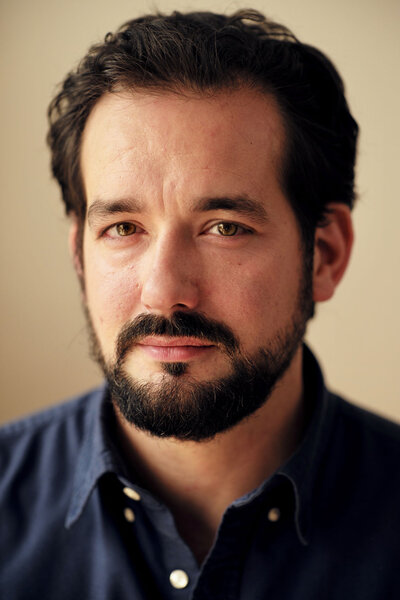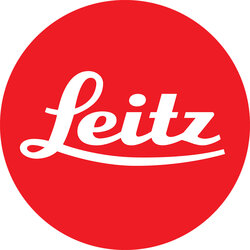Léo Hinstin, the one and the other - both, actually
By Ariane Damain Vergallo for LeitzIn 1789, Joseph Einstein is a private tutor in the province of Alsace, not far from France’s border with Germany. He instantly adheres to the ideals of the French Revolution and decides to “frenchify” his name before settling in Paris, a fiefdom that the family – now renamed “Hinstin” - will never leave.
The true hero of the family, however, is Leo Hinstin’s grandfather, Charles, whose extraordinarily adventurous life will inspire writer Joseph Kessel. A mechanic in Chicago during the Prohibition then a gold digger in Cameroon, Charles Hinstin is made prisoner in 1940 then detained - and tortured - in Germany. He manages to escape with his Stalag companions and soon joins the Resistance, becoming head of the Secret Army in the Limousin region.
Things are a tad more sedate on his mother’s side, as her ancestors were country nobs of old Norman ancestry from the Pays de Caux.
When you are 17, such a genealogy is a source of pride, but it can also be overwhelming, especially since his father, ten years before his son’s birth, was part of the anarchist movement that, along with Daniel Cohn-Bendit, launched the May 1968 protests. During that summer, they even joined Jean-Luc Godard’s Dziga-Vertov group which advocated a militant cinema.
Before obtaining a baccalaureate in science, Léo Hinstin drifts casually from high school to high school. Cinema is but a distant, hazy dream for him. As his parents raised him with the idea that "one is what one make of oneself ", he manages to get a few days’ internship on a commercial to be directed by France’s foremost “photographer of the stars”, Jean-Marie Périer.
On the set, he carefully observes the gaffers, the grips and the best boy’s team, and sticks as close as he can to the first camera assistant. He has already been on a shoot - as an extra - but on that particular first day, he has a revelation : working on camera is what he wants to do. Definitely. Absolutely.
At first, he considers going for the competitive entrance exam to the Louis-Lumière School, but then decides to settle for the Fémis, which seems to him more within his reach…
... Until that one evening when he attends the opening of a Parisian photographer who exhibits, among others, pictures of him as a child. His mother – a doctor, a film buff and a friend to many artists – had casually mentioned that ace cinematographer Caroline Champetier would attend.
Champetier is one of the most brilliant women-cinematographers – make that just cinematographers – in the film business. Despite her age, her filmography is already quasi an encyclopaedia of cinema : she has worked with Ackerman, Godard, Doillon, Rivette and Desplechin, filmmakers who do not even need a first name for film-buffs to know who they are.
Perhaps most importantly, Champetier worked on a film that Leo Hinstin saw three years back and was dazzled by : Xavier Beauvois’s N’oublie pas que tu vas mourir (Don’t Forget You’re Going to Die).
Although hugely impressed, Hinstin dares approach Champetier and ask to take him as a camera intern. Much to Hinstin’s surprise, Champetier says yes.
Thrown in the deep end of the film business pool, Leo Hinstin now must face the usual sink-or-swim conundrum. On his very first commercial as second assistant camera, he unfortunately – and accidentally - exposes a whole reel of 35mm film stock just out of its container.
Far from holding that blunder against him Caroline Champetier enrolls him in her camera team for André Téchiné’s Alice et Martin (Alice and Martin). It is a big-budget film the shooting of which will last seventeen weeks spread through the summer and fall of 1997. Moreover, it is to star Juliette Binoche, who just won an Oscar in Hollywood.
Leo Hinstin runs all day, loading and unloading the cameras at a hellish pace. Champetier even gives him her light meter and puts him in charge of modifying the aperture stop in real time according to the vagaries of the natural light. Him, the 19-year old rooky !
"Beside and beyond my unfettered gratitude, I consider Caroline Champetier as my mentor. She taught me everything."

Ten years of assistantship follow, years that include the documentary Sobibor 14 Octobre 1943, 16 heures (Sobibor, October 14, 1943, 4 p.m.), directed by Claude Lanzmann who, after Shoah, decided to return to Poland to tell of the only successful revolt against the Nazis in the death camps.
Cut to the year 2000. We are on the village square of Wlodawa, near Sobibor.
A blind-drunk giant approaches Leo Hinstin and brutally asks him : "Jude ?" (“Jewish ?”) Quite serendipitously, Hinstin had discussed the matter with Claude Lanzmann the day before. Raised outside of any religious education, he always – and above all – considered himself the descendant of the secular and republican heroes who bore the Hinstin name before him. So he chooses to answer the drunkard with an unequivocal “No.”
At which point, the giant bursts into a horrible laugh and rushes over to kiss him. Immediately, overlapping his disgust at the drunkard’s reaction comes the regret of having said no. Never again, never again, he swears to himself…
In addition to his career as an assistant, he accompanies documentary director François Margolin in Afghanistan’s and Liberia’s refugee camps on the trail of child soldiers.
In 2007, as the shooting of Barbet Schroeder’s L’Avocat de la terreur (Terror’s Advocate) spreads over several months, cinematographer Caroline Champetier who, because of conflicting schedules, can’t be present throughout, calls upon Leo Hinstin to replace her.
It then gradually dawns on him that if one entrusts him with their light meter, he is probably deemed able to use it, therefore, become…a cinematographer.
The first feature film comes a few months later : Entre chien et loup (Nightfall). The film will never be released commercially, but a good relationship Is established with director Pierre Thoretton. Léo Hinstin is then 28 years old. After two last films as assistant camera, he decides to take the plunge and refuse all film jobs at that post, however drastically it might impact his lifestyle.
Well, contrary to conventional wisdom, destiny sometimes rings twice.
Several years back, while still an assistant, he spent months at Yves Saint-Laurent’s famous haute couture house, filming the master’s last collection. When, in 2008, Saint-Laurent died, his entourage immediately thought of Hinstin to film the innumerable assets, past and present, of the Saint Laurent house and thus begin to constitute the archives of the future Saint-Laurent Foundation.
Léo Hinstin sensed the immense interest of that hastily drafted project. He did beyond his damnedest to set up a real film crew and get additional funds from Pierre Bergé to get the best equipment. Pierre Thoretton, his accomplice, made a superb film out of it all, Yves Saint Laurent - Pierre Bergé, L’amour fou.
An international success covered with rewards.
For Leo Hinstin, that first try turned out to be a master stroke. His career as a cinematographer was beginning under the auspices of the most beautiful, most glamorous, more universally recognized that Paris can produce : Haute Couture. The genius of men (mostly) to help steer women on the path to perfection.
In 2013, he shoots, back to back, two American thrillers directed by John Erick Dowdle : As Above So Below, shot in Paris, and No Escape, shot in Thailand, with Owen Wilson and Pierce Brosnan. Two feature films that bring him "technical legitimacy" as well as international recognition.
His filmography as a cinematographer then lists two notable films, Bertrand Bonello’s Nocturama and Nicolas Saada’s Taj Mahal, both of which are shot almost entirely at night. Leo Hinstin has the taste - and talent - to film and light in semi-darkness characters whose lives change abruptly and dramatically.
At the beginning of 2019, Léo Hinstin starts working on Sylvie Verheyde’s Madame Claude, with actors Karole Rocher, Garance Marillier and Roschdy Zem.
Madame Claude is a woman who, to this day, still fascinates public opinion for having, at the end of the 1960s, given the illusion that luxury prostitution was an enviable profession.
Director Sylvie Verheyde is known for favouring hand-held, short-focal-length shots. Leo Hinstin then offers her to shoot it all in wide screen format. After watching the comparative tests, he opts for the Leitz Thalia lenses.
"It was a no-brainer : the Leitz Thalia are adapted to hand-held shots and they make the skins look magnificently beautiful, perfectly natural, totally alive".
With a little help from a friend, he sets up a meeting between Sylvie Verheyde and Anthony Vaccarello, the Saint Laurent House artistic director, who gives them access to the entire YSL archive. The sultry-sexy 1971 collection (called "Scandal") and the outfits designed for Catherine Deneuve in Luis Buñuel’s Belle de jour will dress Madame Claude’s actresses !
Investing one’s reflection and energy deeper and deeper in film projects (a), and (b) loving women and knowing how to film them might very well be, as he combines them, the underlying theme(s) of Leo Hinstin’s work as a cinematographer.
The one and the other. Both.
(Translated from French by Henri Béhar)
 En
En Fr
Fr







